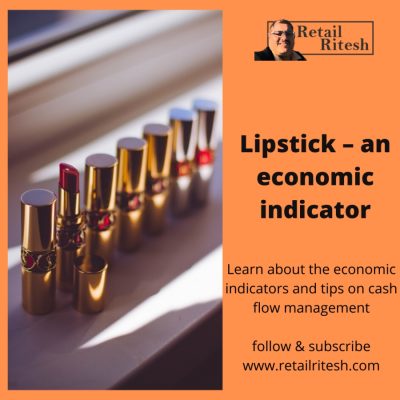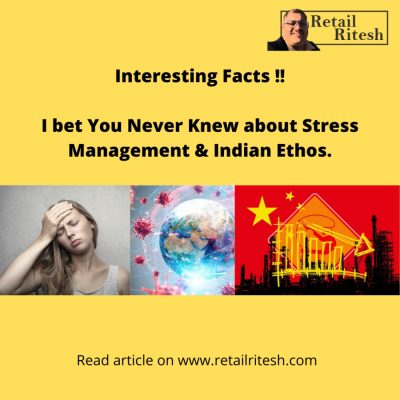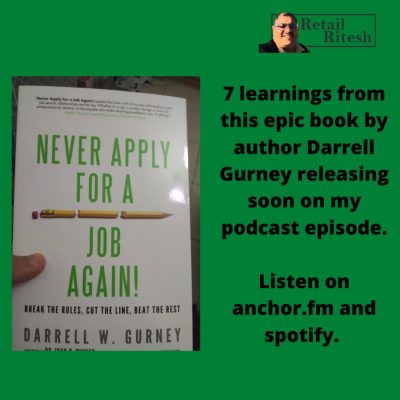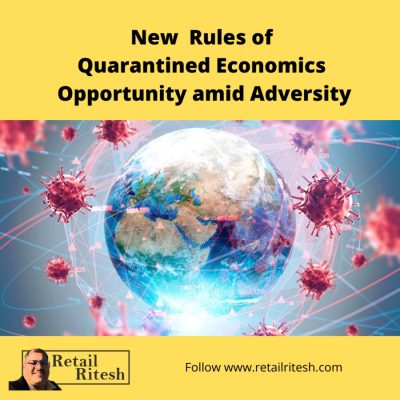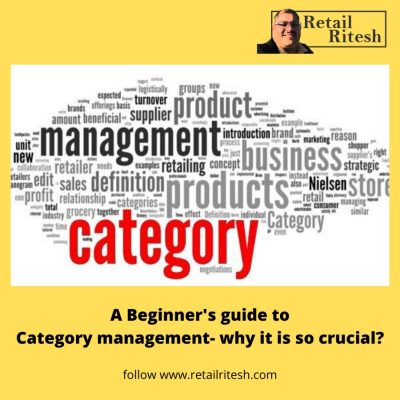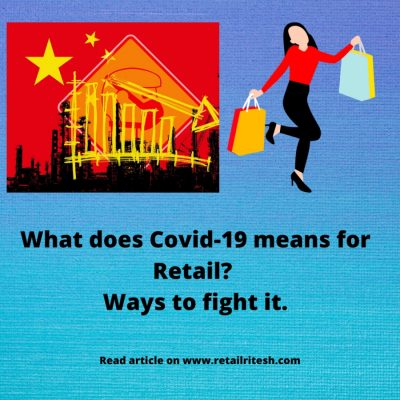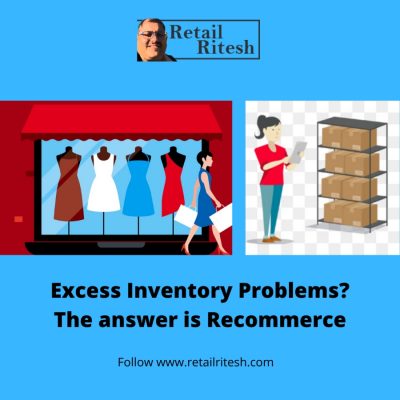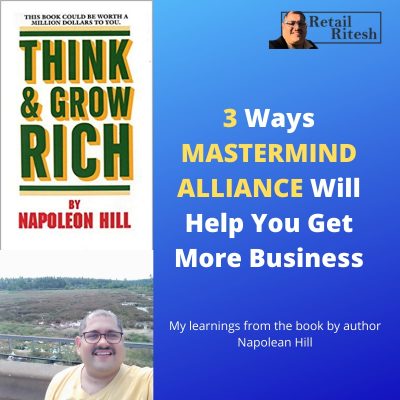Lipstick – An Economic indicator
Lipstick – an economic indicator?
Lipstick, a cosmetic product, giving economists worldwide an indication of the health of the economy.
Last week, one of my friends had posted about Lipstick as an economic indicator which in fact refreshed my memories of handling two brands in cosmetics and kid’s toy segment in 2007-08.
I am going to share my experiences and perspectives which can be used by retailers to surf the turbulent times.
What is Lipstick effect meaning in economics?
As per Wikipedia, The lipstick effect is the theory that when facing economic crisis consumers will be more willing to buy less costly luxury goods.
Instead of buying expensive fur coats, for example, people will buy expensive lipstick.
I shall explain it giving a layman example-
What is the rationale behind the lipstick effect?
The underlying implication is that consumers will buy luxury goods even if there is a crisis. When consumer confidence in the economy is low, people will buy goods that fulfill luxury indulgences without breaking the bank. Outside the cosmetics market, consumers could buy expensive beer or pick an Audi over a Ferrari.
How lipstick became an economic indicator?
After 9/11 deflated the economy, Estee Lauder Company, noticed that they were selling more lipstick than usual.
Economists worldwide started studying the phenomenon and used Lipstick as an economic indicator during tough economic times.
They found a correlation between the economy and lipstick sales.
When the economy is shaky, the sales of lipstick increases, as women boost their mood with inexpensive lipstick purchases instead of buying high priced ticket items.
Beauty brands remained true believers in the theory, even though in the last few years the lipstick market has fallen but it has been balanced by the growth in the sales of lipstick gloss.
According to London-based Research Company Euro monitor, global lip products (which account for lipstick, lip gloss, and liner) are projected to jump 18 percent between now and 2022 – even with global growth expected to taper off.
How current Pandemic Covid19 is different from the 2007-08 economic turmoil?
Personally speaking, I foresee a jump in sales of mid-priced, quality cosmetics goods but it will come with big cost baggage.
Current covid19 has highlighted the importance of keeping personal hygiene which was not there in 2007-08.
In 2007-08 the turmoil was not a health pandemic as we are currently facing.
Cosmetics companies need to produce more personalized mini tester units for each shade, to be dispensed or sampled at their point of sales. Currently, one tester is provided for customer usage and trials.
This means companies need to shell out more dollars in producing mini personalized tester units for their customers, in line with health and safety guidelines.
As per a recent study of Mckinsey,
Economic impact.
Large-scale quarantines, travel restrictions, and social-distancing measures drive a sharp fall in consumer and business spending until the end of Q2, producing a recession.
Consumers stay home, businesses lose revenue and lay off workers, and unemployment levels to rise sharply.
Business investment contracts, and corporate bankruptcies to soar, putting significant pressure on the banking and financial system.
Learn more about quarantined economics, read here.
Category spending
Globally, consumers are still spending (and sometimes spending more) on basics such as food, household supplies, and personal care items, as well as on home entertainment.
From my personal experience of facing the 2008 recession, one category, we did not see a decline in 2007-8 and that was in the children’s goods category like toys, kidswear, apparel for new-borns, etc.
In fact, the Kids category had remained recession-proof.
By rotating merchandise and by rearranging the floor plans regularly, we had maintained the freshness/newness in the store and were able to maintain our like for like sales in 2007-08.
It will be exciting to see how the Kids category will perform in the current scenario.
One category that has emerged as a winner is entertainment, as more & more people are glued to their TV screens and consuming more media and content than ever before.
An interesting insight was shared by Retailme publication, where one of the regional e-commerce sites has seen an upsurge in their sales for food processors, as more & more people are forced to cook at home, hence the need for cooking equipment’s is higher during covid19.
Another trend in fashion will emerge i.e. Recommerce, wherein retailers will buy-back their sold fashion garment from their customers who want to try out new trends without causing a hole in their pockets.
The buy-back merchandise would then be refurbished and resold as “Pre-loved garments”, keeping the sustainability fashion in mind.
Learn more about Recommerce, click here.
The current economic scenario will push fashion retailers for a discounting model as their main priority will be to convert the old collections or merchandise into cash.
(Proving the basic principle i.e. Cash is the King in the cash flow terminology).
How do you manage cash flow in retail?
“Cash flow” refers to the timing of the amount of money flowing into and out of a business i.e.— when cash is coming in and out.
While you may have USD 10,000 in profits for the month on paper;
if those funds aren’t available right away, you won’t be able to meet daily operating expenses.
Bigger Valuations and Market capitalization will not matter.
One of the impacts of covid-19 is on how we look at our books of accounts. Most of the retail CEOs tend to look only at the P&L statement or Income statement and they feel satisfied when they see the amount in the Net profit section…
I call it, Accounting Myopia. (Term coined by me in sync with marketing myopia)
The actual health is reflected on the balance sheet.
CASH ON HAND is the most important parameter.
How will you keep control of your cash flow in tough economic times?
Optimize Your Inventory Management Processes
The bread and butter of your retail business is your inventory.
In the US, a study was done, which found that a normal hypermarket carries 25000 to 30000 SKU’s in their big-box concepts, claiming to offer varieties to customers in each category. However, customers bought only 2000 -3000 SKUs.
Hence we see aggressive promotions, markdowns, etc in order to sell other SKUs.
Always remember, every promotion costs money, the question is how much you are willing to spend, for the money you earn.
Utilize this pandemic to rationalize your merchandise mix, carry merchandise that is selling.
Push orders or delay delivery timelines for seasonal collections in order to optimize your cash flow.
Time to restructure all your debt requirements.
Meet your bankers and get an extension towards repayment periods.
Optimize all your lease agreements with the mall owners.
Renegotiate the leases if required and get rental free periods or any kind of support from the malls as it is the question of survival for all the businesses.
Optimize your cash receivables by putting stringent processes and follow-ups.
(applicable to retail businesses who deals on credit with their channel partners)
Put your expansion plans and new launches in the freezer.
focus on quarterly planning and put all new launches and events on hold to save your cash flow.
I hope my article will help my fellow retailers and fraternity to fight the current economic uncertain times.
About the author:
Ritesh Mohan is a passionate retail professional with over 22 years in the Retail sector and is an independent commentator on the retail sector. He is a prolific writer and runs retailritesh.com wherein he expresses his views with his audience and educates them on the strategic insights.

